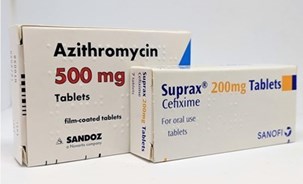 The World Health
Organization, WHO, has estimated that one million new sexually transmitted
infections (STIs) occur every single day. (1)
The World Health
Organization, WHO, has estimated that one million new sexually transmitted
infections (STIs) occur every single day. (1)
Overall, in the UK the cases
of sexually transmitted infections are increasing.
In England alone, in 2018, there were 447,694 new diagnoses of STIs,
a 5% increase on the 422,147 in 2017. (2)
Gonorrhoea increased the most, by 26% to 56,259 cases, the
largest number since 1978.
Where can I buy home treatment? Click here
The number of gonorrhoea cases has been increasing for years
among both men and women, despite repeated warnings from public health doctors
about the risks of unprotected sex.
Gonorrhoea, sometimes referred to as "The Clap",
is a bacterial infection passed between people through unprotected sex.
About 50% of women
and 10% of men are unaware that they’re infected as they don’t experience any
obvious symptoms and this means that the infection can go untreated until the
disease has progressed. This can lead to serious long-term health problems and
infertility.
If symptoms
are experienced, they usually occur about 10 days after being infected. Men and
women are affected differently: (3)
Men may experience
Burning sensation/pain when urinating
Inflammation of the foreskin
An unusual discharge from the tip of the
penis that may be green, yellow or white.
Tenderness or pain in the testicles
While women may experience
Burning sensation/pain when urinating
Bleeding between periods and/or heavier
periods
A change in vaginal discharge which may be
thick and green or yellow in colour.
Lower abdominal discomfort
Bleeding after sex
Testing
If you have put
yourself at risk and are concerned, then you should wait 14 days before taking
a test as it may take this amount of time before the infection can be detected.
If you visit your GP you will probably be signposted to a genitourinary
medicine, GUM, clinic which may also be called a Sexual Health Clinic. If you find it difficult to either get an
appointment at a clinic or are simply short of time or indeed too embarrassed
to go to a clinic, you can choose to order a test from us at Webmed Pharmacy.
For test kits click here.
Our test kits are
sent to The Doctors Laboratory (TDL) in London. They are the largest
independent providers of clinical laboratory diagnostic services in the UK.
Once the lab has received your sample, your results will be available 2-3 days
later.
The kits are posted
in discreet plain unmarked packaging with no indication of their contents or who
it‘s from.
Treatment
If your test is
positive for gonorrhoea we can refer you to a GUM clinic for treatment. The
first line treatment, as recommended by the British Association for Health and
HIV, BASHH, is an injection of a single antibiotic.
If you can’t get to
a GUM clinic, unable to get an appointment or have a needle phobia then our
doctor can prescribe second line treatment that comprises of two different
antibiotics that you take orally. As our treatment is second line, and
therefore not considered to be as effective as the first line treatment, we
provide a free “test of cure” that you can send to the lab 14 days after
treatment to make sure you are clear of infection.
We will ask that
you complete a simple medical questionnaire that our Doctor can assess for your
suitability and, if approved, be prescribed the oral antibiotics to treat the
infection.
Your treatment will
be delivered in discreet, unmarked packaging with no mention of the contents or
who it’s from. You can have your parcel delivered to your home or work address
and, if in an area where we use DPD, you can have it diverted to a local pickup
shop where you can collect it at your convenience.
The symptoms for
all STIs are very similar and it’s better to get tested to find out which STI
you may have rather than trying to guess from your symptoms. Then you can
receive the most appropriate treatment and be sure of treating the infection
successfully.
This is especially
important for gonorrhoea as there is evidence of a resistant strain of
gonorrhoea emerging in the UK and unnecessary prescribing of antibiotics can
contribute to this.
For Gonorrhoea and Chlamydia treatments, click here.
References
https://www.who.int/news-room/fact-sheets/detail/sexually-transmitted-infections-(stis)
https://assets.publishing.service.gov.uk/government/uploads/system/uploads/attachment_data/file/806118/hpr1919_stis-ncsp_ann18.pdf
https://www.nhs.uk/conditions/gonorrhoea/symptoms/
Medically reviewed by
Superintendent pharmacist Margaret Hudson BSc(Hons)
MRPharmS
11th June 2019